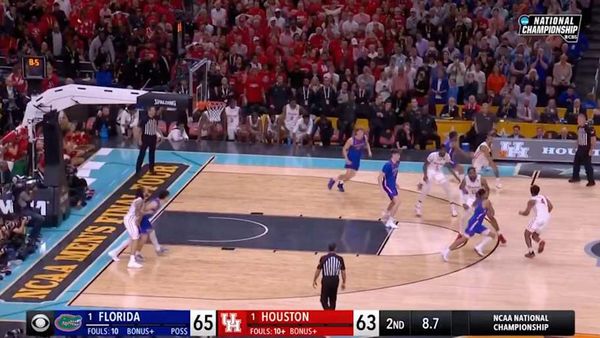In Seattle neighborhoods from Columbia City to Capitol Hill, developers are holding off on planned apartment projects. Downtown, office buildings are shedding tenants. At City Hall, fewer permit applications for new construction are flowing in.
All over Seattle, the commercial real estate market is showing signs of sluggishness, the result of rising interest rates, high construction costs, ongoing remote work and, now, new uncertainty in banking. This slowdown could mean less new housing built over the next few years and more office towers facing financial trouble.
"It's really a challenge on all fronts," said Jake McKinstry, managing partner at apartment builder Spectrum Development Solutions.
With higher interest rates and more aversion to risk, banks are requiring builders to bring more cash to pair with a loan, according to developers, investors and lenders.
The result? "A lot of deals just aren't penciling (out)," said Robert Meunier, senior loan officer at Bellevue Capital Group.
"It's a tougher lending environment to get construction loans right now," Meunier said. "Lenders are just being super selective."
Investors who are moving from construction loans to permanent loans also face higher rates, which require them to bring some cash to the deal in those cases — a far cry from financing at ultralow rates in recent years.
"There's only a certain amount of equity we and our investors have," said Eagle Rock Ventures Managing Director Scott Shapiro. "If you have to put more into an existing project to get a permanent loan, then that equity that we would normally use for a new budget isn't there."
Meanwhile, rents have leveled off, meaning developers' profit margins aren't climbing. The median rent in Seattle — $1,559 for a one-bedroom apartment — is down about 1% from a year ago, according to Apartment List.
A planned 50-unit apartment building on the edge of the Central District is now "so far under water, I look and think, 'Wow I can't believe I ever thought this would work,'" said developer Ben Maritz, who's holding off on the project for now.
"Interest rates and construction costs are completely out of whack," Maritz said. "They have to get back into balance with rent."
Interest rates on commercial real estate loans climbed in recent months as the Federal Reserve raised rates to try to curb inflation. The Fed has so far increased key rates to about 4.6% from less than 1% a year ago. Interest rates on construction loans vary among lenders, but typically hover in a range between 6.5% and 8%, compared with 4% to 5% a year ago, Meunier said.
Construction costs such as labor and materials have also increased, by about 7% nationally and 5% in Seattle from 2021 to 2022, according to the Mortenson Cost Index. Material prices, especially for things like pipes made of PVC, steel and copper, shot up after 2020 and started to level off in 2022.
A drop-off in commercial real estate projects can have far-reaching effects, including on government budgets, employment and the housing supply.
After the real estate market began to cool last year, for example, Seattle budget writers predicted a shortfall in tax revenue tied to construction and sales. Fewer new apartments can also exacerbate a housing shortage. The state estimates that King County needs 17,000 new homes every year for the next two decades to keep up with projected population growth and housing demand.
Financial sense
On a triangular lot in Columbia City, development and investment firm Eagle Rock Ventures has plans and permits for 111 apartments and ground-floor retail. The project has encountered various hurdles since 2014, including permitting delays, but developers were getting closer to a deal to finance it just before interest rates started to climb, said managing director Scott Shapiro. Now, the plans are on hold again.
"Basically any project I underwrite won't make financial sense with interest rates where they are today," Shapiro said.
The result could be fewer new apartment developments in Seattle.
New permit applications for apartment buildings, which the city tracks based on the number of apartments total, declined 61% from 2021 to 2022, according to preliminary city data. (The city warns the numbers could change because applications have not yet been vetted by city staff.) Permits were issued for about 42% fewer units. Developers have blamed city regulations and long permitting timelines along with high costs.
The permitting and construction process can take several years, so permit applications hint at the future of the city's housing supply over the next few years. The number of apartments finished in 2022, likely permitted a year or more earlier, was up 102% from 2021.
In contrast to the pre-pandemic building boom, when Seattle had more construction cranes on the skyline than any other U.S. city, Seattle ranked second behind Los Angeles in the latest crane count last fall. But under-construction projects likely began the planning and permitting process years ago, meaning the count of cranes lags the most recent trends.
Office trouble
Investors and developers in Seattle's office market are facing similar headwinds, with an added stressor: remote work.
Once-safe investments in office buildings have looked more questionable since the pandemic fundamentally shifted the culture of office work. Leasing volume in downtown Seattle offices was down nearly 39% in the first quarter of 2023 compared with the same time last year, according to commercial real estate firm Savills.
The factors together are creating a "massive whammy" for the office market, said Lisa Picard, a partner at a venture capital firm who previously ran Blackstone's office portfolio.
Trouble for office buildings was percolating even before the pandemic, as the growth of the American workforce declined, yet developers continued to build new office space "because you got paid on it, and pretty handsomely," Picard said.
Now, overall availability, including vacant office space and space available for sublease, stands at about 23% downtown, up 4 percentage points from the same time in 2022, according to Savills.
Banks are taking notice.
The share of office building loans considered "criticized" spiked to 25.5% in the last quarter of 2022, from about 3.5% in the previous quarter, according to the real estate data firm Trepp, which analyzes data provided by banks. Criticized loans are those "getting the most scrutiny or being monitored the most closely from the bank," said Stephen Buschbom, research director at Trepp.
Late payments, low occupancy or declining value of an office building can lead banks to downgrade loans — all factors that could be playing out in Seattle, said Buschbom.
"Places like Seattle, San Francisco, Washington (and) New York, have all struggled with the remote work, hybrid work environment" reducing demand for offices, Buschbom said.
"We already had these problems" before bank failures, he said. But banking turmoil represents a "stress multiplier."
In Trepp's comparison, Seattle ranked seventh out of 18 major metro areas for its average office loan risk rating. San Francisco topped the list, with the riskiest loan rating.
Office space is sitting empty and investment activity is "sparse" across the entire Puget Sound region, according to a recent report from commercial real estate firm Kidder Mathews, which cites high interest rates, inflation and tech layoffs.
Bellevue and the rest of the Eastside have benefited from a lower vacancy rate than Seattle, but that area hasn't been spared in recent months, either. Microsoft, Facebook and Amazon have all pulled back on leasing or construction plans on the Eastside in the past year.
"The regional office market is clearly struggling and highly volatile at present, particularly in Seattle," Kidder Mathews analysts wrote.
The recent failures of Silicon Valley Bank and Signature Bank led some business owners to spread out their money to various institutions to ensure their money is insured and guard against losses. For some banks, that is "creating a shortage of deposits, which banks use to lend money on," Picard said.
Lenders with limited resources look for the best projects to fund, and those are unlikely to be office projects, Picard said. "Right now, it's not clear office assets are going to hold value."
Office loans coming due in the next couple of years can also be a red flag for banks, analysts say. Plus, weak demand for office space and few comparable sales can make it difficult for lenders to assess the true value of the building.
"We still have this really overarching question of where demand is going to be five, 10 years from now," Buschbom said. "Even to write a 5-year loan, you still have to ask yourself, 'Well, five years from now, is it going to look any better?'"
For many developers, the uncertainty means taking a pause.
Landlord and developer Morris Groberman typically relies on renovation loans to buy older buildings, rehab them and raise the rents. But, he says, those loans began to dry up even before recent bank failures.
"[Lenders] just don't want the risk anymore and they're trying to hold onto their capital," Groberman said.
Groberman says he's holding onto the lots he plans to redevelop, waiting out the market.
"We're just pedaling along very, very slowly," he said. "The amount of cash I need to build right now is stupid."







